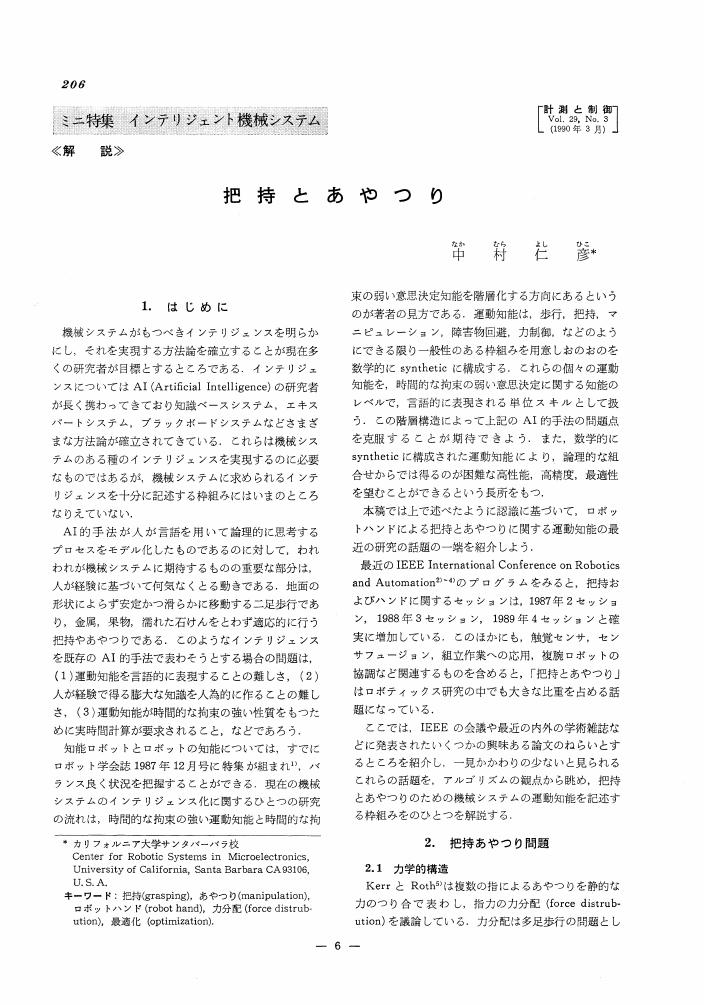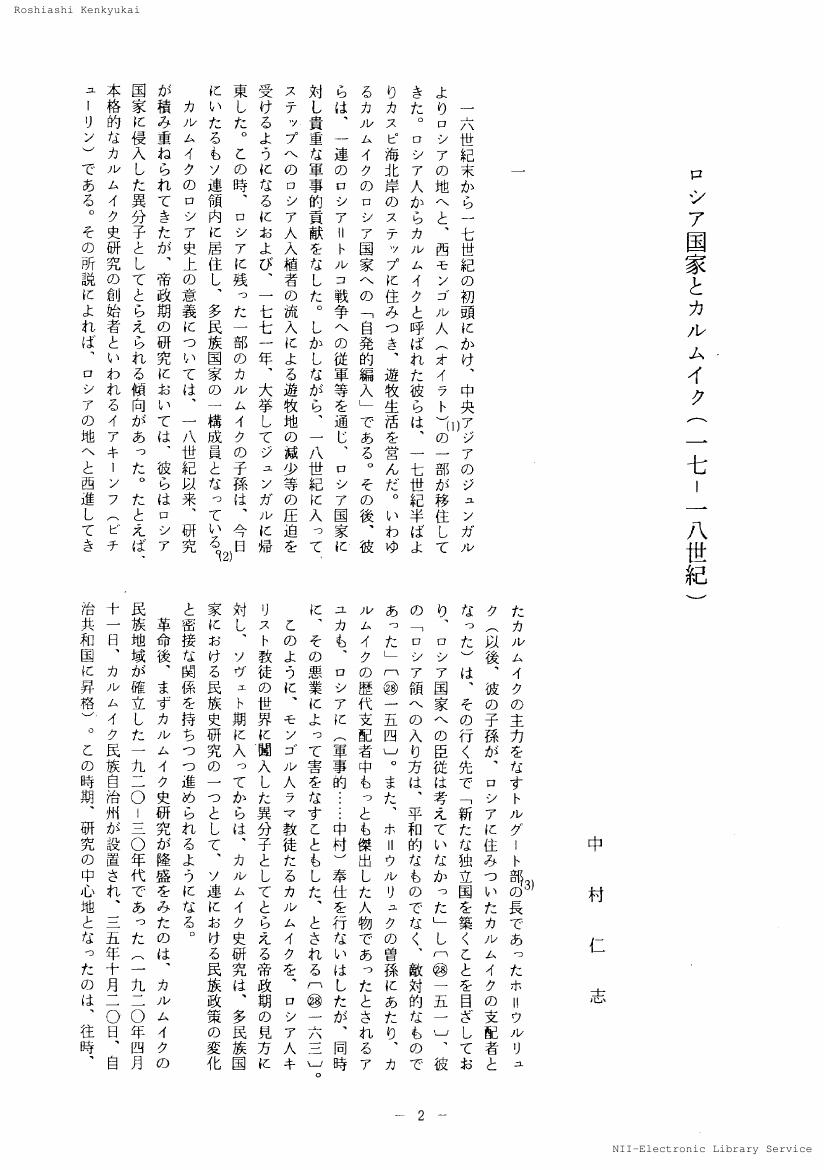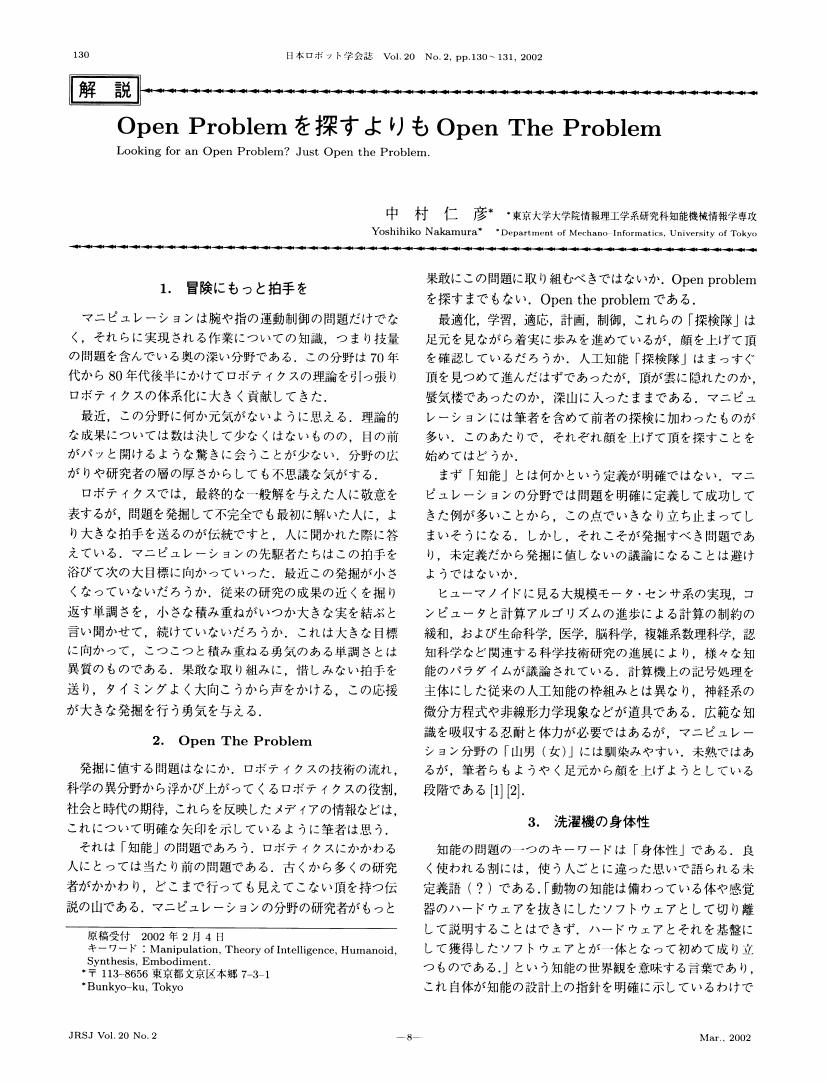12 0 0 0 OA 診断に苦慮したlinitis plastica型胃癌の1例
- 著者
- 武田 健一 菊池 大輔 飯塚 敏郎 布袋屋 修 三谷 年史 黒木 優一郎 松井 啓 山下 聡 藤本 愛 中村 仁紀 貝瀬 満
- 出版者
- 一般社団法人 日本消化器内視鏡学会 関東支部
- 雑誌
- Progress of Digestive Endoscopy (ISSN:13489844)
- 巻号頁・発行日
- vol.77, no.2, pp.76-77, 2010-12-10 (Released:2013-07-25)
- 参考文献数
- 2
- 被引用文献数
- 1 1
In the case of gastric cancers, it is essential to determine the extent and depth of the tumor accurately for deciding on courses of treatment. We have sometimes experienced the cases that pre-therapeutic diagnosis of those factors were difficult. In this report, we describe a case of gastric linitis plastica, which was diagnosed based on the ESD and additional surgical specimens. The patient was 60 years old man. A depressed lesion was pointed out at the greater curvature of middle gastric body. Biopsy revealed pooly differentiated and signet ring cell adenocarcinoma. Using magnification and EUS, this lesion was diagnosed as intramucosal cancer and 20mm in size. After informed consent, ESD was performed and the lesion was resected in en bloc fashion. However pathological examination showed incomplete resection of margin positive in endoscopic specimen and isolated cancer cell remained in the muscle layer in surgical resected specimen. Finally, this case was diagnosed of gastric linitis plastica based on the pathological examination.
12 0 0 0 OA 把持とあやつり
- 著者
- 中村 仁彦
- 出版者
- 公益社団法人 計測自動制御学会
- 雑誌
- 計測と制御 (ISSN:04534662)
- 巻号頁・発行日
- vol.29, no.3, pp.206-212, 1990-03-10 (Released:2009-11-26)
- 参考文献数
- 29
- 被引用文献数
- 3
7 0 0 0 OA 基礎科学実験 Aにおけるレポート管理システムの導入
- 著者
- 高田 亨 中村 仁 鈴木 勝
- 出版者
- 電気通信大学
- 雑誌
- 電気通信大学紀要 (ISSN:09150935)
- 巻号頁・発行日
- vol.22, no.1, pp.167-172, 2010-02-15
The report management system was introduced into the Physics Laboratory class in the first-year curriculum. This class is a compulsory subject, and plays an important role in the education of our university. However, the management of students’ reports puts a heavy load on staff, associated with the lack of experience on experiment. We developed a new management system in order to reduce the load of report management. This system also enables us to grasp the status of students’ activities for the Physics Laboratory class in real time.
7 0 0 0 IR 発達障害と性犯罪および性非行についての文献的考察
- 著者
- 木戸 久美子 中村 仁志 藤田 久美 林 隆
- 出版者
- 山口県立大学
- 雑誌
- 山口県立大学社会福祉学部紀要 (ISSN:1341044X)
- 巻号頁・発行日
- vol.11, pp.135-139, 2005-03-20
本研究は発達障害と性非行および性犯罪との関連を文献的に考察することを目的とした。本邦における医学文献の検索には医学中央雑誌を、外国文献の検常には医学文献データベースMEDLINEを用いた。発達障害と性非行および性犯罪との関連の医学論文は国内で3件、国外で6件とともに少なかった。性非行や性犯罪と関連する発達障害としては、本邦では広汎性発達障害、なかでもAsperger症候群があげられていた。外国では注意欠陥/多動性障害(以下AD/HD)との関連も指摘されていた。どのような発達障害特性が性非行や性犯罪に関連するかは、エビデンスが十分ではないために断定的なことは言えない。発達障害と性非行および性犯罪を短絡的に結びつけることは大変危険であるが、文献的研究からは、発達障害児者の持つ発達特性と彼らを取り巻く否定的な環境要因が、結果的に発達障害児者を反社会的行為に追い込んでしまう可能性が示唆された。
7 0 0 0 OA 沈み込み帯での地殻流体の発生と移動のダイナミクス
- 著者
- 岩森 光 中村 仁美
- 出版者
- 公益社団法人 東京地学協会
- 雑誌
- 地学雑誌 (ISSN:0022135X)
- 巻号頁・発行日
- vol.121, no.1, pp.118-127, 2012-02-25 (Released:2012-03-05)
- 参考文献数
- 30
- 被引用文献数
- 4 5
The generation and migration of geofluids in subduction zones are discussed for the subducting slab and the overlying mantle wedge and crust in terms of theoretical models and observations. Theoretical models include several mechanisms of fluid migration, e.g., Rayleigh-Taylor instability, Stokes ascent, channel flow, and porous flow, whose characteristic lengths and velocities differ significantly. As a result, these mechanisms may occur in different settings within subduction zones. We compare seismic and geochemical observations with the model of fluid migrations, based on which a typical fluid fraction within the mantle wedge is estimated to be 0.1 to 1 vol.%. Accordingly, it is suggested that fluid migration within the mantle wedge is driven by the buoyancy of the fluid, rather than being dragged by the flow of solid matrix. This suggests the fluid rises vertically. In the shallow part of the mantle wedge and within the arc crust, in particular the upper crust, the channel flow seems to be dominant. However, the relationship between these channels and the surface exits observed as volcanoes and hot spring systems is unclear. To better understand fluid distribution and migration, we need to incorporate more observations (e.g., electrical conductivity structure) and models (e.g., models of petrological and thermal structures).
1.神経筋骨格モデルおよびそのための順・逆動力学計算法の開発と神経医療における知見を基にした検証と改良従来の筋骨格モデルに比べて極めて詳細(155自由度の骨格と約1000本の筋)な筋骨格モデル,および脊髄神経から筋までの神経-筋ネットワークをモデル化した神経筋骨格モデルを開発した.また,体性反射や筋ダイナミクスなど生理学的な知見をもとに高精度な筋張力推定アルゴリズムを開発した.2.計算・シミュレーション結果の可視化と低次元化による診断・リハビリテーション支援への応用計測された運動データ,計算された筋張力などを三次元モデルやグラフとして可視化し,神経筋疾患の診断やリハビリテーションを支援するツールを開発した.また,多次元のデータを低次元化して容易に理解できるように提示する技術を開発した.3.神経筋骨格モデルパラメータを非侵襲に同定する手法の開発骨格モデルの運動学・質量パラメータ,関節粘弾性パラメータ,筋モデルパラメータ,神経-筋ネットワークパラメータを,非侵襲な運動・筋電計測データのみにより同定する手法を開発した.4.新しい非侵襲運動計測システム技術の提案従来の球状マーカを用いた光学式モーションキャプチャに代わる運動計測システムのプロトタイプを開発した.具体的には,平面状のメッシュマーカを用いて計測点数を増加するとともに安全性を高めた方法と,カラー画像を用いてマーカレスに運動とトポロジーの取得を同時に行う方法を実現した.
3 0 0 0 OA 哺乳類の肩甲骨の形態学的研究
- 著者
- 和田 直己 谷 大輔 中村 仁美 大木 順司 西村 剛 藤田 志歩
- 出版者
- 日本霊長類学会
- 雑誌
- 霊長類研究 Supplement 第29回日本霊長類学会・日本哺乳類学会2013年度合同大会
- 巻号頁・発行日
- pp.80, 2013 (Released:2014-02-14)
脊椎動物の肢は前肢2本,後肢2本の合計4本である.4肢は 動物の体に前後,左右,さらに上下方向に作用する力に対して安定を保つに必要十分であり,また脊椎動物の特徴である体軸の運動を陸上で最大限に活用できる数である.前肢と後肢の機能は動物によって異なる.特に前肢の機能は多様で,動物を特徴づける.前肢は肩甲骨,鎖骨,烏口骨で体幹と連結する.哺乳類は体幹と前肢の連結において特に肩甲骨を発達させた脊椎動物である.肩甲骨の形質は動物の姿勢と運動の特徴を強く反映する.本研究の目的は肩甲骨の外形,力学的特性と動物の形質の関係を理解することにある.本研究の実験方法における課題は機能する肩甲骨の形状をとらえることにあった.そこで骨標本ではなく,全身,または前肢のCT撮影を行い,肩甲骨をPC上で構築し,計測を行った.本学会において,17目 100種の肩甲骨について調査した結果から導きだされた肩甲骨の形状と動物種,身体的特徴と運動との関係について発表を行う.謝辞国立科学博物館 山田格研究室,川田伸一郎研究室,大阪ネオベッツVRセンターのスタッフの方に深謝を.
3 0 0 0 OA ロシア国家とカルムイク : 一七-一八世紀
- 著者
- 中村 仁志
- 出版者
- ロシア史研究会
- 雑誌
- ロシア史研究 (ISSN:03869229)
- 巻号頁・発行日
- vol.42, pp.2-17, 1986-02-20 (Released:2017-07-25)
- 著者
- 中村 仁
- 出版者
- 日本ドイツ学会 ; 1990-
- 雑誌
- ドイツ研究 = Deutschstudien (ISSN:13441035)
- 巻号頁・発行日
- no.52, pp.77-92, 2018
3 0 0 0 OA <症例>注意欠陥/多動性障害の子どもとの関わり : 多動や衝動をめぐる遊びについて
- 著者
- 中村 仁志
- 出版者
- 山口県立大学
- 雑誌
- 山口県立大学看護学部紀要 (ISSN:13430904)
- 巻号頁・発行日
- vol.3, pp.77-83, 1999-03
注意欠陥/多動性障害(ADHD)は, これまで微細脳機能障害, 多動性障害, 学習障害などとも呼ばれてきた障害であり, DSM-III-Rにおいて, 行動面に注目し定義された診断カテゴリーである。行動の特徴には不注意, 多動, 衝動的行動がある。注意欠陥/多動性障害の子どもたちと接していると自己評価の低さを随所に認める。こうした問題行動に起因すると思われる自己評価を回復するために, 彼らは遊戯療法場面であたかも自分の多動性や衝動性をコントロールしようとすることをテーマとした遊び(以下コントロール遊び)を展開することがある。Aくんは学校の規則や社会の決まりが守れない, 衝動的な行動が目立つことで相談に訪れた子どもである。我々は彼との遊びを通して, 彼の自己評価の低い一面を見た。彼は遊びの中で, 彼が投影されてるのであろう"パジェロちゃん"というキャラクターを用い, 自己評価を回復するために"コントロール遊び"を展開した。"コントロール遊び"を繰り返すことは, 衝動コントロールの感覚をつかみ自分の機能を高める訓練であり, 自己評価を回復するためのロールプレイであると考えられた。
3 0 0 0 OA ナシ萎縮病菌Fomitiporia sp.の担子胞子の飛散消長
- 著者
- 金子 洋平 中村 仁 塩田 あづさ 鈴木 健 鈴木 達哉 幸 由利香 牛尾 進吾
- 出版者
- 日本植物病理学会
- 雑誌
- 日本植物病理学会報 (ISSN:00319473)
- 巻号頁・発行日
- vol.80, no.1, pp.3-10, 2014 (Released:2014-04-05)
- 参考文献数
- 10
ナシ萎縮病菌(Fomitiporia sp.)の伝染源と考えられる担子胞子の飛散消長を明らかにした.2008~2011年に野外において,延べ8個の子実体を供試し,それらの直下にグリセリンゼリーを塗抹したスライドグラスを設置して担子胞子を採取した.4年間における胞子飛散は断続的であったものの,開始時期は5月31日~7月7日,終了時期は11月10日~11月21日の間であった.それぞれの時期の気温は,17.0~24.5°C,12.1~14.1°Cであり,飛散開始時期はいずれの年も梅雨期間中であった.12月から翌年の5月までは担子胞子の飛散はほとんど認められなかったことから,1年間における飛散期間は,概ね6~11月であると考えられた.この期間中における飛散の中断時期は,降雨の無い日が継続した時期(主に夏季)と概ね一致した.2011年の夏季に供試子実体に散水を適宜行ったところ,胞子の飛散はほとんど中断しなかった.室内試験において,本菌の胞子の飛散は20~30°Cの範囲で起こり,10,15および35°Cでは胞子の飛散は停止した.また,乾燥条件が継続すると,胞子の飛散は停止することが明らかとなった.気温と水分条件は胞子形成およびそれに続く飛散に影響を与えた.
3 0 0 0 ブックスタートの実態調査と効果的な実施方法についての検討
- 著者
- 中村 仁美 南部 志緒
- 出版者
- 日本図書館情報学会
- 雑誌
- 日本図書館情報学会誌 (ISSN:13448668)
- 巻号頁・発行日
- vol.53, no.2, pp.75-89, 2007-06-20
本研究の目的はブックスタートの概要を把握すること,ブックスタートや乳幼児と読書に対する担当職員の考え方を明らかにすること,先進的な取り組みをしている自治体での実施方法を明らかにすることの3点である。研究1の調査対象は,2003年8月時点で,関東でブックスタートを実施している69の自治体であり,実際に回答を得られたのは58自治体であった。研究2の調査対象は,研究1で回答を得た58自治体から,A町,B区,C市,D市の計4ヶ所に決定した。両研究から,ブックスタートの実施において,丁寧な説明や,図書館のPR,会場環境の整備,実施の時間帯を考慮することが,より効果的な実践方法であるという示唆が得られた。今後は,本研究の知見を踏まえて,ブックスタートのより充実した実践方法を検討し,その効果についても実証的に検討していくことが望まれる。
2 0 0 0 OA 有馬型温泉水とスラブ脱水
- 著者
- 中村 仁美 岩森 光
- 出版者
- 一般社団法人日本地球化学会
- 雑誌
- 地球化学 (ISSN:03864073)
- 巻号頁・発行日
- vol.56, no.4, pp.76-86, 2022-12-25 (Released:2022-12-25)
- 参考文献数
- 66
Arima-type hot spring waters that exhibit unique geochemical characteristics and their formation are reviewed based on subduction-zone-scale perspectives and studies concerning fluid circulation. Arima-type hot spring waters produced in non-volcanic regions exhibit properties similar to those of volcanic fluids. In order to clarify the formation mechanism, we first review the definition of volcanic/non-volcanic regions and their essential differences. Then we discuss the dehydration reactions in the subducting plates, the resulting distribution and geochemical characteristics of slab fluids, and present evidences of their ascent into the Japanese crust and their role in the global material cycling. In addition, the characteristics and causes of the recently discovered Arima-like hot spring water in the Eurasian continent are reported, and the extent of the material circulation in the wide subduction zone is discussed.
現在の不妊治療の治療効率を向上するためには現在ブラックボックスである受け入れ側の子宮の着床能を前方視的に評価しその周期ごとの治療方針に反映させなければならない。これまでの我々の研究において、ヒトでは排卵期前に子宮内膜の電気生理学的パラメータを測定する事でその周期の子宮内膜の受容能が前方視的に評価できる事を明らかにした。本研究では、この物質的基盤を明らかにするために月経による子宮内膜の再生機構について、マウスモデルを用いて基礎研究を行う。将来的に、電気生理学的評価の物質的基盤を検討する事でヒト子宮の着床能を前方視的に評価する装置システムの精度の向上だけでなく、治療への応用をめざす。
2 0 0 0 OA Open Problemを探すよりもOpen The Problem
- 著者
- 中村 仁彦
- 出版者
- The Robotics Society of Japan
- 雑誌
- 日本ロボット学会誌 (ISSN:02891824)
- 巻号頁・発行日
- vol.20, no.2, pp.130-131, 2002-03-15 (Released:2010-08-25)
- 参考文献数
- 3
- 被引用文献数
- 1 1
2 0 0 0 OA 電気通信大学の物理学実験(実験室)
- 著者
- 高田 亨 中村 仁 鈴木 勝
- 出版者
- 一般社団法人 日本物理学会
- 雑誌
- 大学の物理教育 (ISSN:1340993X)
- 巻号頁・発行日
- vol.19, no.3, pp.103-106, 2013-11-15 (Released:2019-05-25)
- 被引用文献数
- 1
2 0 0 0 OA 地殻流体の起源・分布と変動現象
- 著者
- 岩森 光 行竹 洋平 飯尾 能久 中村 仁美
- 出版者
- 公益社団法人 東京地学協会
- 雑誌
- 地学雑誌 (ISSN:0022135X)
- 巻号頁・発行日
- vol.128, no.5, pp.761-783, 2019-10-25 (Released:2019-11-15)
- 参考文献数
- 116
- 被引用文献数
- 2 3
A total of one to ten ocean masses of water (including H2O, OH, H in gas, liquid, and solid phases) is probably stored in the Earth's crust-mantle system as a variety of forms and components. Of these, the liquid phase involves aqueous solution, hydrous melt, and supercritical fluid, which may change composition continuously from a diluted aqueous fluid to a silicate melt above the second critical endpoint. These fluids are termed “geofluids” in this review paper, which describes physicochemical conditions required for the presence of geofluids, their compositions, and related tectonic setting and geodynamic phenomena. On the basis of the maximum water content that can be stored in crust-mantle rocks, subduction zone processes are discussed in which slab-derived fluids that are enriched in solid components play important roles: viscosity-flow-thermal field and melting in the mantle wedge, and origin of deep-seated fluid such as Arima-type brine. The fluid flux in the arc crust may be captured by geophysical and geochemical observations, such as seismicity, seismic velocity, electrical conductivity, and helium isotopic ratios. Several specific phenomena such as migrating seismic events and localized crustal deformation may be attributed to such fluid fluxes from the depths, which have been induced by an elevated fluid pressure and a reduction of rock strength and viscosity.
2 0 0 0 CT画像からの助骨呼吸3次元運動の解析
- 著者
- 朴 鎔燮 北岡 裕子 佐藤 嘉伸 上甲 剛 中村 仁信 田村 進一
- 出版者
- 一般社団法人電子情報通信学会
- 雑誌
- 電子情報通信学会論文誌. D-2, 情報・システム 2-パターン処理 (ISSN:09151923)
- 巻号頁・発行日
- vol.84, no.8, pp.1618-1627, 2001-08-01
- 参考文献数
- 18
- 被引用文献数
- 6
CTスキャナの高速化高解像度化により,胸部全体の3次元CT画像が取得可能になってきた.本論文では,異なる呼吸相での胸部CT画像から肋骨の運動を解析する手法を提案する.提案手法では各肋骨を肋骨の中心線に相当する曲線として表現し,肋骨運動の解剖的な知識に基づいた誤差関数により曲線の繰返しレジストレーションを行い,肋骨の回転中心軸と軸周りの回転角度を計算する.画像シミュレーションにより,中心線抽出精度,レジストレーション精度,提案した誤差関数の収束性の評価を行った.提案手法を4人の健康ボランティアのCT画像に適用することにより評価し,計測結果を論じた.本手法は,単純性と精度の面で肋骨の呼吸運動の計測に有用であることが示された.





